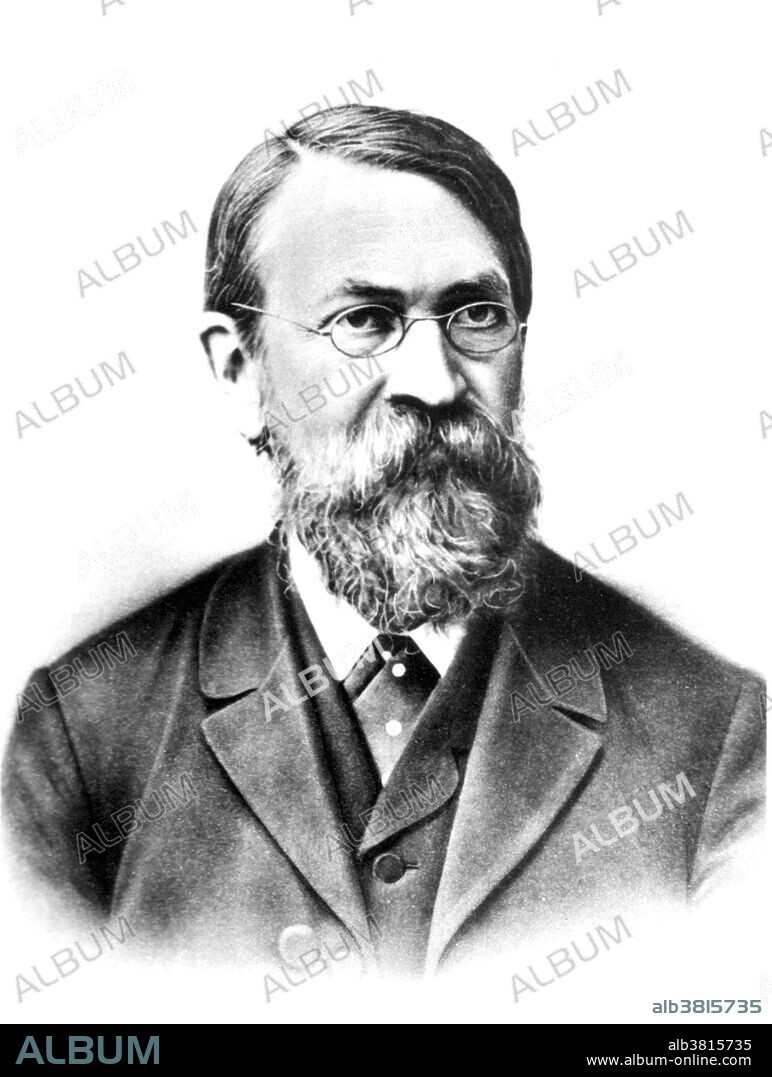alb3815735
Ernst Mach, Austrian Physicist and Philosopher

|
Add to another lightbox |
|
Add to another lightbox |



Title:
Ernst Mach, Austrian Physicist and Philosopher
Caption:
Ernst Mach (1838-1916) was an Austrian physicist and philosopher. Mach's main contribution to physics involved his description and photographs of spark shock-waves and ballistic shock-waves. He described how when a bullet or shell moved faster than the speed of sound, it created a compression of air in front it. Using schlieren photography, he and his son Ludwig were able to photograph the shadows of the invisible shock waves. The Mach number is named for him (a dimensionless number representing the speed of an object moving through air or other fluid divided by the local speed of sound). Mach's initial studies in the field of experimental physics concentrated on the interference, diffraction, polarization and refraction of light in different media under external influences, but then he became interested in the field of supersonic velocity. As a philosopher of science, he was a major influence on logical positivism and through his criticism of Newton, a forerunner of Einstein's relativity. Mach also made many contributions to psychology and physiology, including his anticipation of gestalt phenomena, his discovery of the oblique effect and of Mach bands, an inhibition-influenced type of visual illusion, and especially his discovery of a non-acoustic function of the inner ear which helps control human balance. In 1898 Mach suffered from cardiac arrest and retired in 1901. He died peacefully in his son's home in 1916 the day after his 78th birthday.
Credit:
Album / NLM/Science Source
Releases:
Model: No - Property: No
Rights questions?
Rights questions?
Image size:
2850 x 3779 px | 30.8 MB
Print size:
24.1 x 32.0 cm | 9.5 x 12.6 in (300 dpi)
Keywords:
1838 • 1901 • 1916 • 19TH CENTURY • 20 XX TWENTIETH CENTURY • 20TH CENTURY • ART • ARTWORK • AUSTRIAN • BALLISTIC SHOCK-WAVES • BW • CELEBRITY • DRAWING • E. MACH • ERNST MACH • EUROPEA • EUROPEAN • EXPERIMENTAL PHYSICIST • EXPERIMENTAL PHYSICS • FAMOUS • FIGURE • FLUID MECHANICS • GESTALT PHENOMENA • HISTORIC • HISTORICAL • HISTORY • ILLUSTRATION • IMPORTANT • INVISIBLE SHOCK WAVES • MACH BANDS • MACH NUMBER • MACH REFLECTION EFFECT • MACH WAVES • MACH'S PRINCIPLE • MACH • MACHS PRINCIPLE • MALE • MAN • MEN • NOTABLE • OPTIC ILLUSION • OPTICAL ILLUSION • PEOPLE • PERSON • PERSONALITIES • PERSONALITY • PHILOSOPHER OF SCIENCE • PHILOSOPHER • PHYSICIST • PHYSICS • PORTRAIT • POTRAIT • SCIENCE PHILOSOPHY • SCIENCE • SCIENTIST • SHACK WAVES • SPARK SHOCK-WAVES • SPEED OF SOUND • SUPERSONIC VELOCITY • TWENTIETH CENTURY • VISUAL ILLUSION • WELL-KNOWN
 Pinterest
Pinterest Twitter
Twitter Facebook
Facebook Copy link
Copy link Email
Email

